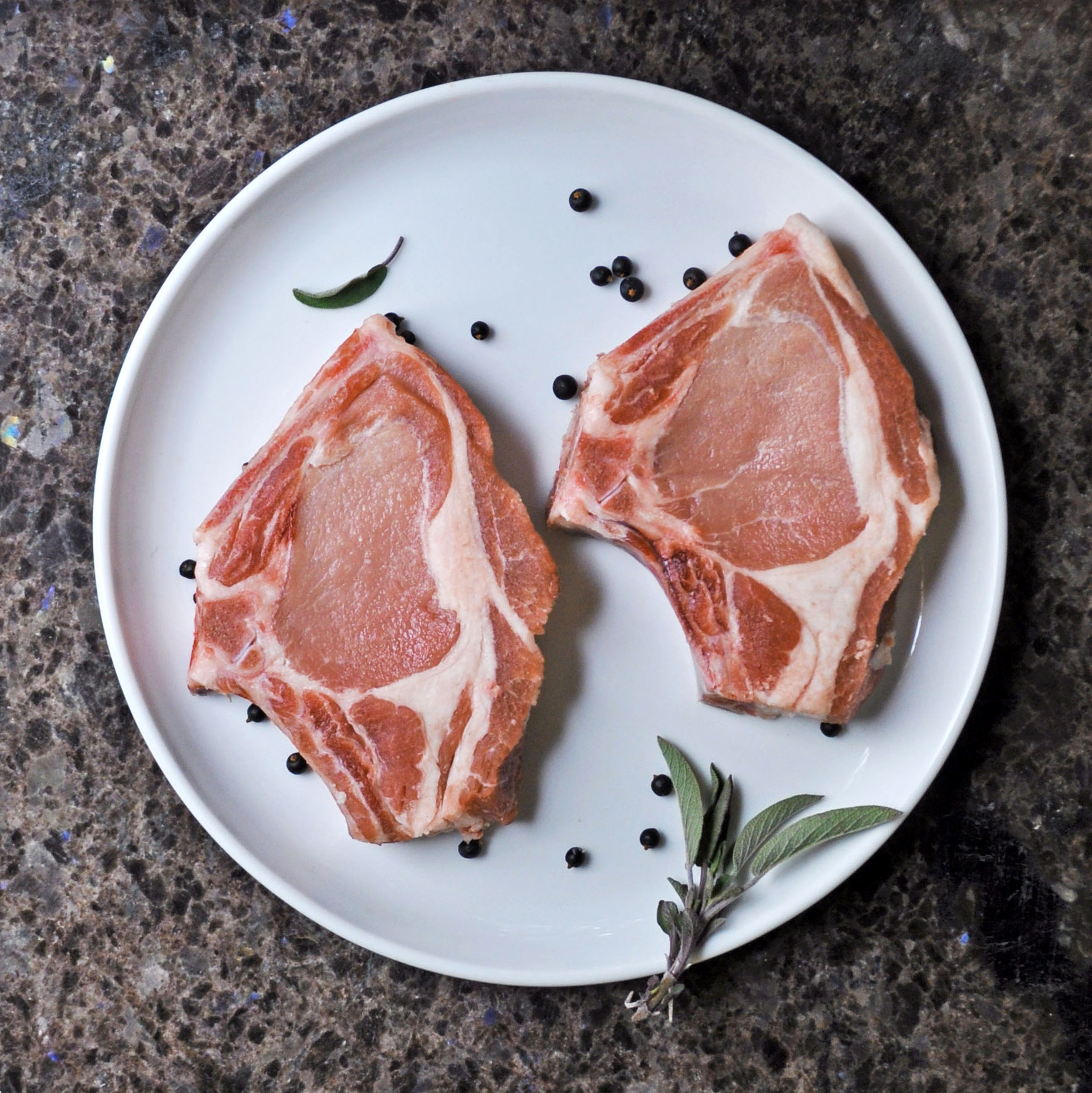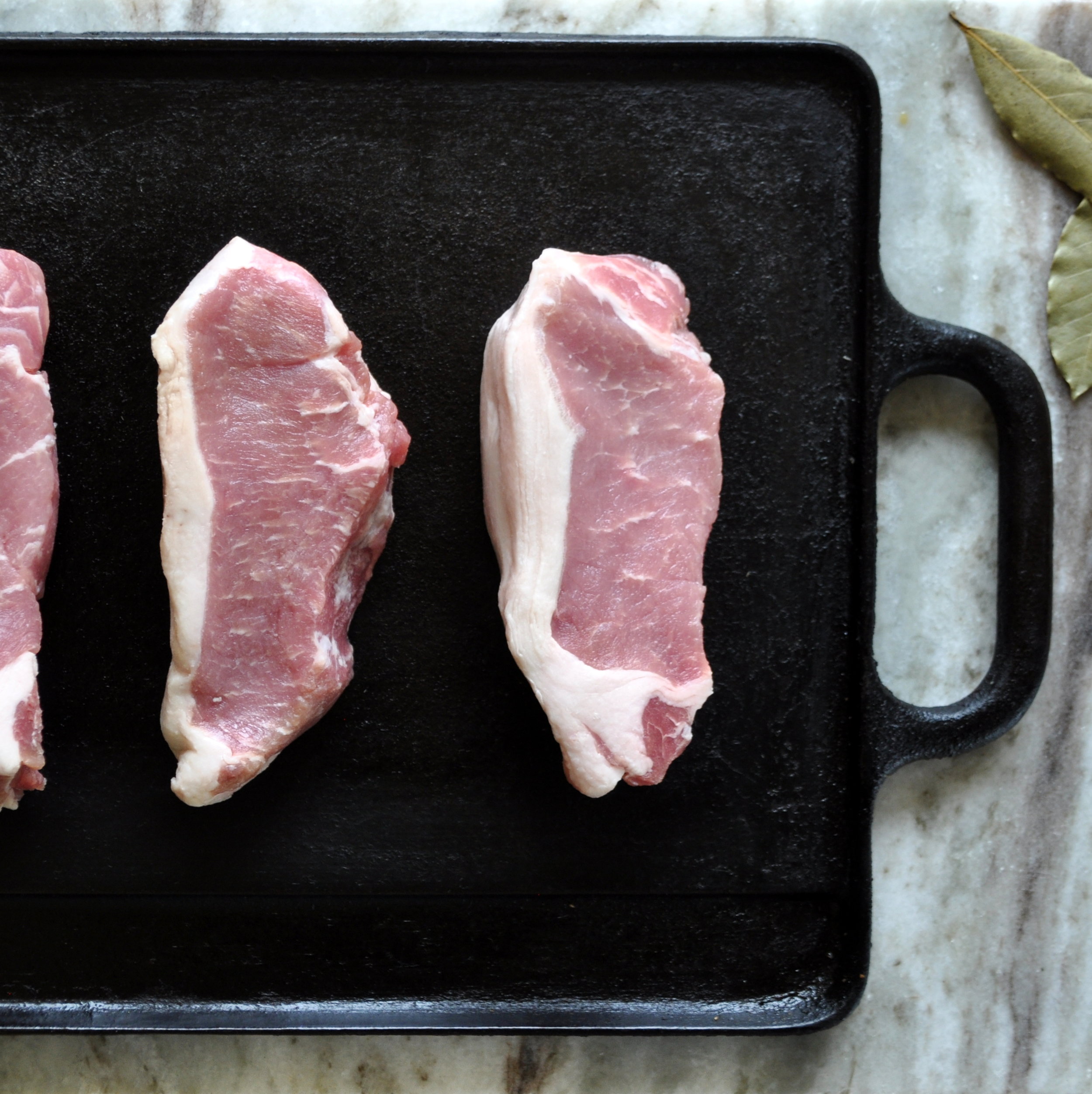Brining Pasture-Raised Meats
Pasture-raised meat is way more flavorful than anything you can find at the store, but if you’re new to old-school animal protein, chances are you’re also going to find it to be tougher than what you’re used to. There’s a short list of good reasons for this.
Because of industrial agriculture’s reliance on intense confinement, conventionally raised animals don’t move all that much. Side effect: more tender meat. Second, 20th century animal geneticists made extraordinary advances in the actual animals that conventional farms raise. Their lives are way shorter as a result of all that science. That also translates into less movement, and less texture in the meat. Finally, if you read the package on many types of supermarket chicken and pork, you’ll find “water” and “salt” listed as additional ingredients. These additives serve two purposes. First, they cause the final product to weigh slightly more, resulting in a slightly higher price at checkout. And second, saltwater brine is an ancient tenderizer and flavor enhancer for meat. (Injecting it by robot needles? Not so ancient.)
The good news is, you can have it all. At our house, we thaw the meat right in a brine solution. Pyrex dishes with lids, stock pots, anything that’s big enough for the meat and small enough for your fridge will work. Anything that we’re not slowly braising gets this treatment, and that means anything that’s destined for the grill.
Pork chops and whole chickens, I’m looking at you.
L to R: Brined bone-in pork chops ready for the grill, two whole chickens thawing in a brine solution in a stock pot, brined, boneless chops ready for a quick pan-fry.
Brine Recipe per 1 LB of Meat *
2 teaspoons fine grind sea salt
1 heaping teaspoon coarse grind sugar (if it’s normal sugar, use less)
If you’re trying to watch sugar and/or salt in your diet, there are a couple things you should know. I know it seems like a lot of sugar and salt. Because sugar molecules are so large, they never make it into the meat you’re brining. The sugar is there to encourage the fascinating and delicious browning mechanism called the Maillard Reaction. As for the salt, that does enter into the food, but you should by no means imagine that you’re eating 2 teaspoons of salt per pound of meat. Most of that is staying in the water, out of your dinner. In my experience, the salt ratios suggested here are very forgiving. That means you can feel fine about leaving the meat in the brine you’ve prepared for longer than a day and not worry about ruining your meal.
Also, it’s a convenient way to do not one but three things at once. You’re seasoning your food. You’re protecting it from drying out on the grill. And you’re thawing it safely in the fridge, like you should. It’s an extra step, but in our family’s experience, this is the only way to go for quick-cooking pasture raised protein over high heat. The results are delicious, simple to achieve, and really predictable.
* The above recipe is infinitely scaleable. For the two whole chickens pictured above—about 9 lbs of meat—you’d want to dissolve about 1/3 cup of salt and a scant 1/4 cup of coarse grind sugar in the soaking water. Give the chickens 48 hours to thaw in the fridge.



